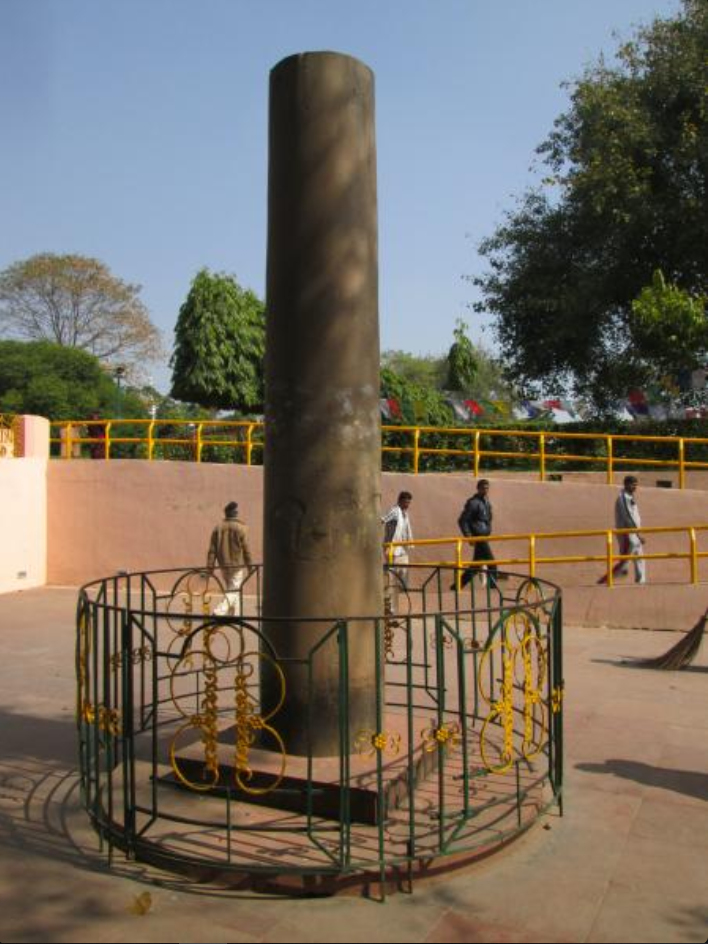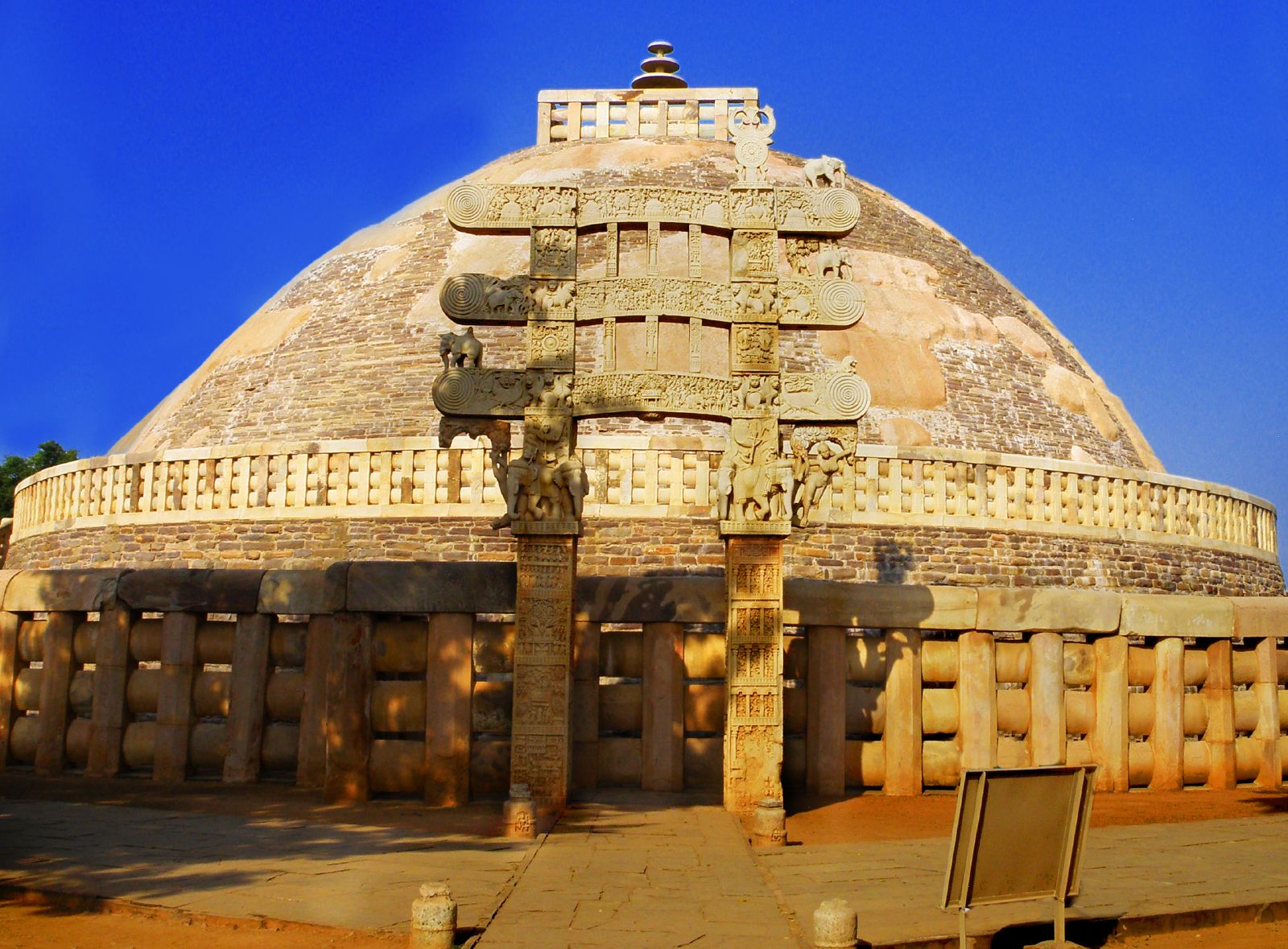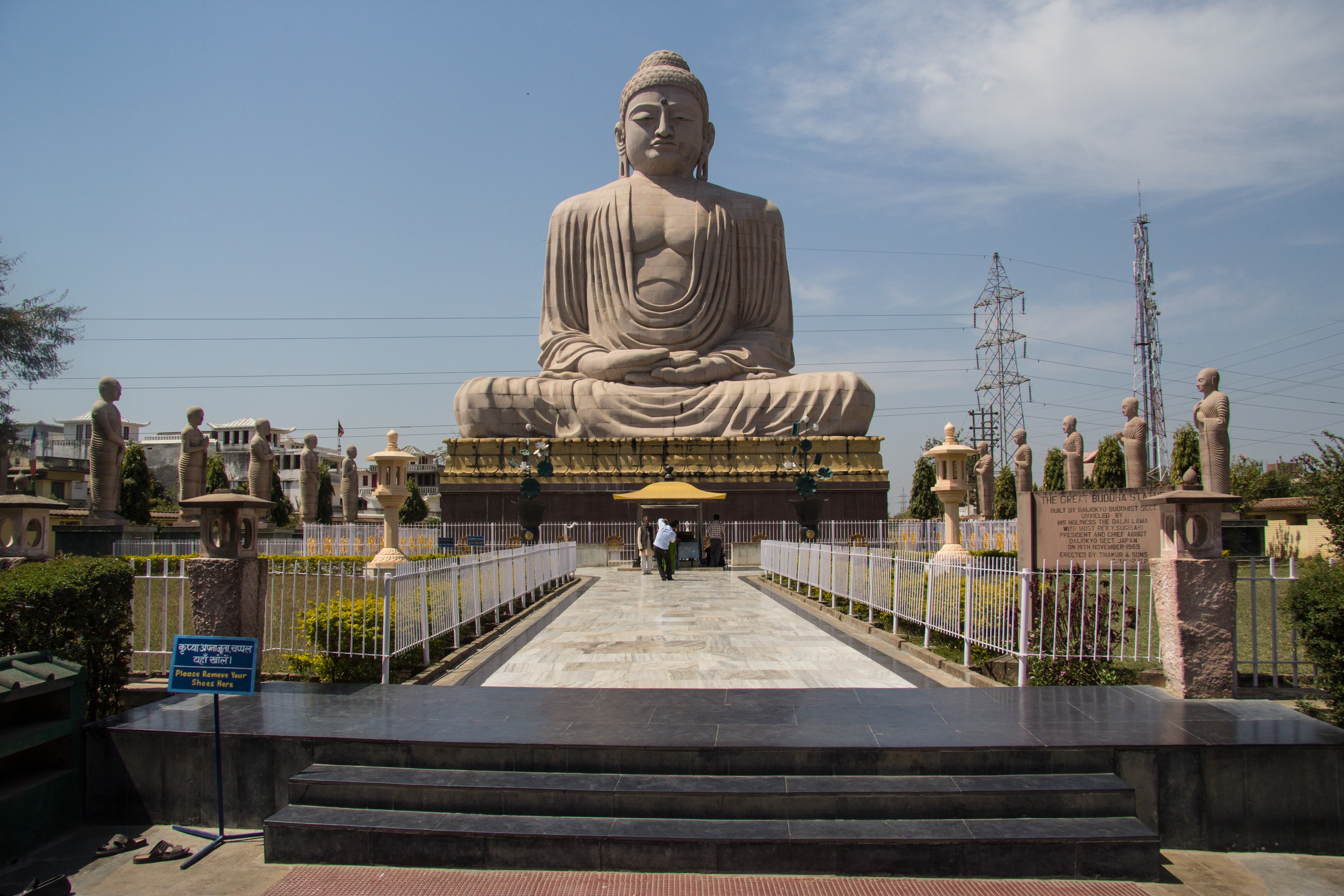|
Bakraur
Bakraur, sometimes called Bakrour, is a village located slightly east of Bodh Gaya in the state of Bihar, India. It lies directly across the Phalgu River from the town of Bodh Gaya, where Gautama Buddha is said to have attained enlightenment. The village of Bakraur is believed to be the home of Sujata, who is said to have fed Gautama Buddha milk and rice shortly before he attained Enlightenment. A stupa dedicated to Sujata has been erected in Bakraur (photo). See also *List of Monuments of National Importance in Bihar This is a list of Monuments of National Importance (ASI) as officially recognized by and available through the website of the Archaeological Survey of India in the Indian state Bihar. References External links Sujata Stupa< ... [...More Info...] [...Related Items...] OR: [Wikipedia] [Google] [Baidu] |
Sujata Stupa
Sujata Stupa, also Sujata Kuti stupa or Sujata Garh, is a Buddhist stupa located in the village of Senanigrama ( Bakraur) slightly east of Bodh Gaya in the state of Bihar, India. It lies directly across the Phalgu River from the town of Bodh Gaya, where Gautama Buddha is said to have attained enlightenment. It is a walk of about 20 minutes, from Bodh Gaya to Sujata Stupa. It was initially built in the 2nd century BCE as confirmed by finds of Dark Grey polished wares and a punch-marked coin in the monastery nearby. The stupa was dedicated to the milkmaid Sujata, from the village of Bakraur, who is said to have fed Gautama Buddha milk and rice at this spot as he was sitting under a Banyan tree, thereby ending his seven years of fasting and asceticism, and allowing him to attain illumination through the Middle Way. The stupa was originally adorned with a pillar of Ashoka, which was quarried in part for building material in the 1800s, then placed at the Gol Pather intersection of ... [...More Info...] [...Related Items...] OR: [Wikipedia] [Google] [Baidu] |
Bodh Gaya
Bodh Gaya is a religious site and place of pilgrimage associated with the Mahabodhi Temple Complex in Gaya district in the Indian state of Bihar. It is famous as it is the place where Gautama Buddha is said to have attained Enlightenment ( pi, bodhi, pi-Latn) under what became known as the Bodhi Tree. Since antiquity, Bodh Gaya has remained the object of pilgrimage and veneration both for Hindus and Buddhists. In particular, archaeological finds including sculptures show that the site was in use by Buddhists since the Mauryan period. For Buddhists, Bodh Gaya is the most important of the main four pilgrimage sites related to the life of Gautama Buddha, the other three being Kushinagar, Lumbini, and Sarnath. In 2002, Mahabodhi Temple, located in Bodh Gaya, became a UNESCO World Heritage Site. History Bodh Gaya is considered to be the holiest site in Buddhism. Known as Uruwela in the Buddha's time, it is situated by the bank of Lilajan River. The first temple at the site was ... [...More Info...] [...Related Items...] OR: [Wikipedia] [Google] [Baidu] |
List Of Monuments Of National Importance In Bihar
This is a list of Monuments of National Importance (ASI) as officially recognized by and available through the website of the Archaeological Survey of India in the Indian state Bihar.List of Monuments of National Importance as published by the Archaeological Survey of India . The monument identifier is a combination of the abbreviation of the subdivision of the list (state, ASI circle) and the numbering as published on the website of the ASI. 70 Monuments of National Importance have been recognized by the ASI in Bihar. List of monuments of national importance See also * |
Sujata (milkmaid)
Sujata, also Sujātā, was a farmer's wife, who is said to have fed Gautama Buddha a bowl of kheera, a milk-rice pudding, ending his six years of asceticism. Such was his emaciated appearance that she wrongly believed him to be a tree-spirit that had granted her wish of having a child. The gift provided him enough strength to cultivate the Middle Way, develop jhana, and attain Bodhi, thereafter becoming known as the Buddha. The village of Bakraur near Bodh Gaya is believed to be her home. The Sujata Stupa was dedicated to her there in the 2nd century BCE. Gallery File:092 Cave 11, Buddha with Sujata from Side (33438497684).jpg, Sujata and the Buddha in Ajanta (Cave 11). File:084a Sujata presents food to the Bodhisattva in her Home (28143370033).jpg, Sujata in Lalitavistara, Borobudur. File:083 Sujata (detail) (9166313782).jpg, Sujata and the Buddha (Thailand). File:Sujata in Wat Pho.jpg, Sujata in Wat Pho. File:037 Sujata offers Milk-Rice to the Bodhisatta who later fl ... [...More Info...] [...Related Items...] OR: [Wikipedia] [Google] [Baidu] |
Phalgu
The Phalgu or Falgu, a river that flows past Gaya, India in the Indian state of Bihar, is a sacred river for Hindus and Buddhists. Lord Vishnu's Temple Vishnupad Mandir is situated on the bank of Phalgu river also called Niranjana river. Course The Phalgu is formed by the confluence, some below Bodh Gaya, of the Lilajan (also called Niranjan or Nilanjan) and the Mohana, two large hill streams each of which is over wide. The Phalgu is also mentioned as Niranjan. The united stream flows on to the north past the town of Gaya, where it attains a breadth of over . The Phalgu here passes by a high rocky bank, on the steep sides of which are many paved stairs leading down to the river bed, while high above are the Vishnupad Mandir, with many minor shrines around it. It then runs in a north-easterly direction for about , and opposite the Barabar hills it again takes the name of Mohana, and divides into two branches which eventually flow into a branch of the Punpun. The Phalgu like ... [...More Info...] [...Related Items...] OR: [Wikipedia] [Google] [Baidu] |
Cities And Towns In Gaya District
A city is a human settlement of notable size.Goodall, B. (1987) ''The Penguin Dictionary of Human Geography''. London: Penguin.Kuper, A. and Kuper, J., eds (1996) ''The Social Science Encyclopedia''. 2nd edition. London: Routledge. It can be defined as a permanent and densely settled place with administratively defined boundaries whose members work primarily on non-agricultural tasks. Cities generally have extensive systems for housing, transportation, sanitation, utilities, land use, production of goods, and communication. Their density facilitates interaction between people, government organisations and businesses, sometimes benefiting different parties in the process, such as improving efficiency of goods and service distribution. Historically, city-dwellers have been a small proportion of humanity overall, but following two centuries of unprecedented and rapid urbanization, more than half of the world population now lives in cities, which has had profound consequences for g ... [...More Info...] [...Related Items...] OR: [Wikipedia] [Google] [Baidu] |
Buddhist Sites In Bihar
Buddhism ( , ), also known as Buddha Dharma and Dharmavinaya (), is an Indian religion or philosophical tradition based on teachings attributed to the Buddha. It originated in northern India as a -movement in the 5th century BCE, and gradually spread throughout much of Asia via the Silk Road. It is the world's fourth-largest religion, with over 520 million followers (Buddhists) who comprise seven percent of the global population. The Buddha taught the Middle Way, a path of spiritual development that avoids both extreme asceticism and hedonism. It aims at liberation from clinging and craving to things which are impermanent (), incapable of satisfying ('), and without a lasting essence (), ending the cycle of death and rebirth (). A summary of this path is expressed in the Noble Eightfold Path, a training of the mind with observance of Buddhist ethics and meditation. Other widely observed practices include: monasticism; " taking refuge" in the Buddha, the , and the ; and ... [...More Info...] [...Related Items...] OR: [Wikipedia] [Google] [Baidu] |
Tourist Attractions In Bihar
Tourism is travel for pleasure or business; also the theory and practice of touring, the business of attracting, accommodating, and entertaining tourists, and the business of operating tours. The World Tourism Organization defines tourism more generally, in terms which go "beyond the common perception of tourism as being limited to holiday activity only", as people "travelling to and staying in places outside their usual environment for not more than one consecutive year for leisure and not less than 24 hours, business and other purposes". Tourism can be domestic (within the traveller's own country) or international, and international tourism has both incoming and outgoing implications on a country's balance of payments. Tourism numbers declined as a result of a strong economic slowdown (the late-2000s recession) between the second half of 2008 and the end of 2009, and in consequence of the outbreak of the 2009 H1N1 influenza virus, but slowly recovered until the COVID-19 pa ... [...More Info...] [...Related Items...] OR: [Wikipedia] [Google] [Baidu] |
History Of Buddhism In India
Buddhism is an ancient Indian religion, which arose in and around the ancient Kingdom of Magadha (now in Bihar, India), and is based on the teachings of Gautama Buddha who was deemed a "Buddha" ("Awakened One"), although Buddhist doctrine holds that there were other Buddhas before him. Buddhism spread outside of Magadha starting in the Buddha's lifetime. During the reign of the Buddhist Mauryan Emperor Ashoka, the Buddhist community split into two branches: the Mahāsāṃghika and the Sthaviravāda, each of which spread throughout India and split into numerous sub-sects. In modern times, two major branches of Buddhism exist: the Theravada in Sri Lanka and Southeast Asia, and the Mahayana throughout the Himalayas and East Asia. The Buddhist tradition of Vajrayana is sometimes classified as a part of Mahayana Buddhism, but some scholars consider it to be a different branch altogether. The practice of Buddhism lost influence in India around the 7th century CE, after the co ... [...More Info...] [...Related Items...] OR: [Wikipedia] [Google] [Baidu] |
Buddhist Pilgrimage Sites In India
In religion and spirituality, a pilgrimage is a long journey or search of great moral significance. Sometimes, it is a journey to a sacred place or to a shrine of importance to a person's beliefs and faith. Members of every major religion participate in pilgrimages. A person who makes such a journey is called a pilgrim. There are number of historical Buddhist pilgrimage sites in the Republic of India. Places associated with the life of Buddha Primary sites Buddhism offers four primary sites of pilgrimage: Lumbini (birthplace of the Buddha), Bodh Gaya (the site where the Buddha attained enlightenment), Sarnath (the location of the Buddha’s first sermon), and Kushinagar (the location where the Buddha attained parinirvana). All of these sites are located in India except Lumbini, which is located in southern Nepal. File:Exterior view of the Mahabodhi Temple.jpg, "Maha Bodhi Temple" at Bodh Gaya File:Dhamek Stupa, Sarnath.jpg, Dhamek Stupa, Sarnath File:Ancient Buddhist monaste ... [...More Info...] [...Related Items...] OR: [Wikipedia] [Google] [Baidu] |
Gautama Buddha
Siddhartha Gautama, most commonly referred to as the Buddha, was a wandering ascetic and religious teacher who lived in South Asia during the 6th or 5th century BCE and founded Buddhism. According to Buddhist tradition, he was born in Lumbini, in what is now Nepal, to royal parents of the Shakya clan, but renounced his home life to live as a wandering ascetic ( sa, śramaṇa). After leading a life of begging, asceticism, and meditation, he attained enlightenment at Bodh Gaya in what is now India. The Buddha thereafter wandered through the lower Indo-Gangetic Plain, teaching and building a monastic order. He taught a Middle Way between sensual indulgence and severe asceticism, leading to Nirvana, that is, freedom from ignorance, craving, rebirth, and suffering. His teachings are summarized in the Noble Eightfold Path, a training of the mind that includes meditation and instruction in Buddhist ethics such as right effort, mindfulness, and '' jhana''. He di ... [...More Info...] [...Related Items...] OR: [Wikipedia] [Google] [Baidu] |
India
India, officially the Republic of India (Hindi: ), is a country in South Asia. It is the seventh-largest country by area, the second-most populous country, and the most populous democracy in the world. Bounded by the Indian Ocean on the south, the Arabian Sea on the southwest, and the Bay of Bengal on the southeast, it shares land borders with Pakistan to the west; China, Nepal, and Bhutan to the north; and Bangladesh and Myanmar to the east. In the Indian Ocean, India is in the vicinity of Sri Lanka and the Maldives; its Andaman and Nicobar Islands share a maritime border with Thailand, Myanmar, and Indonesia. Modern humans arrived on the Indian subcontinent from Africa no later than 55,000 years ago., "Y-Chromosome and Mt-DNA data support the colonization of South Asia by modern humans originating in Africa. ... Coalescence dates for most non-European populations average to between 73–55 ka.", "Modern human beings—''Homo sapiens''—originated in Africa. Then, int ... [...More Info...] [...Related Items...] OR: [Wikipedia] [Google] [Baidu] |






.jpg)